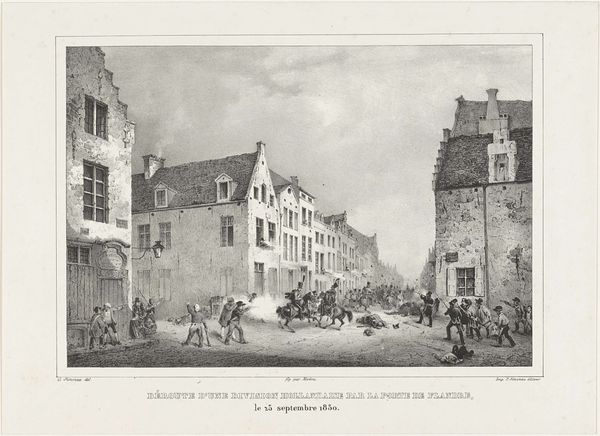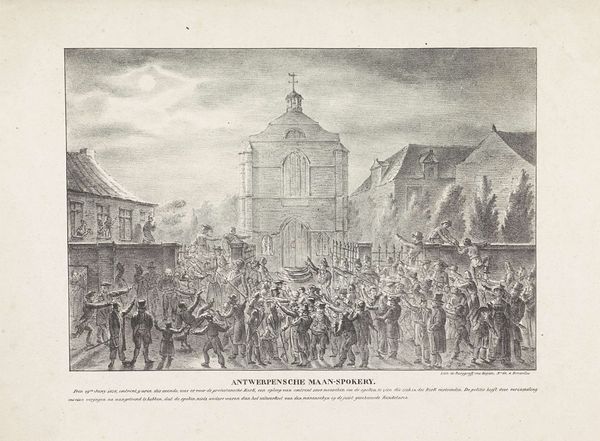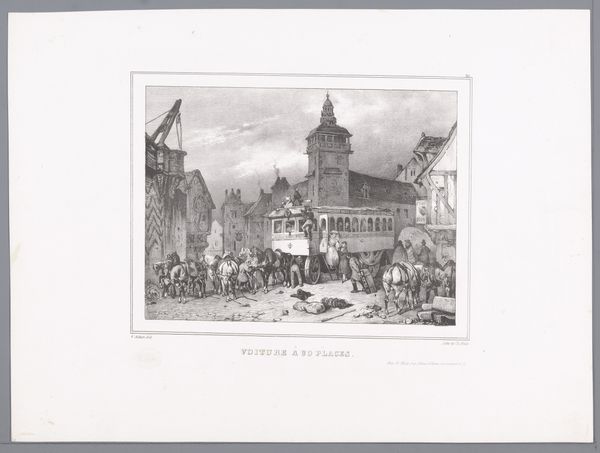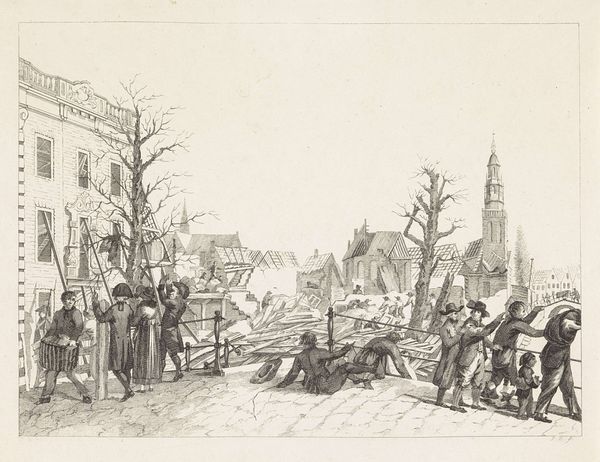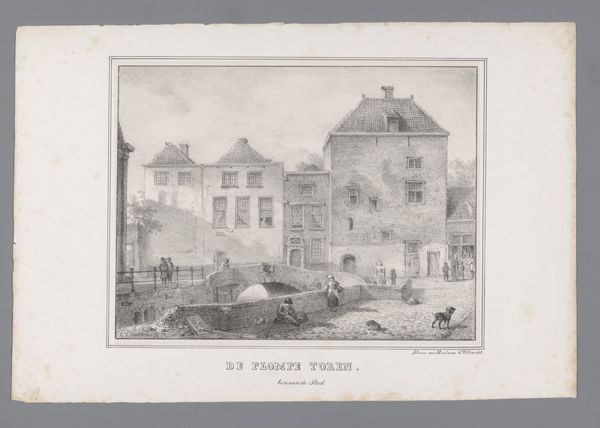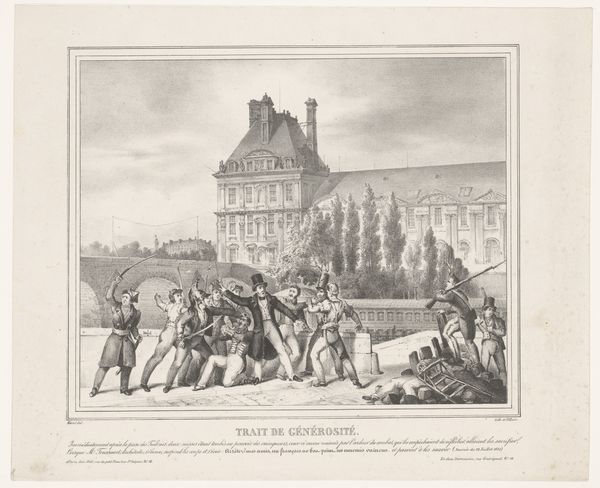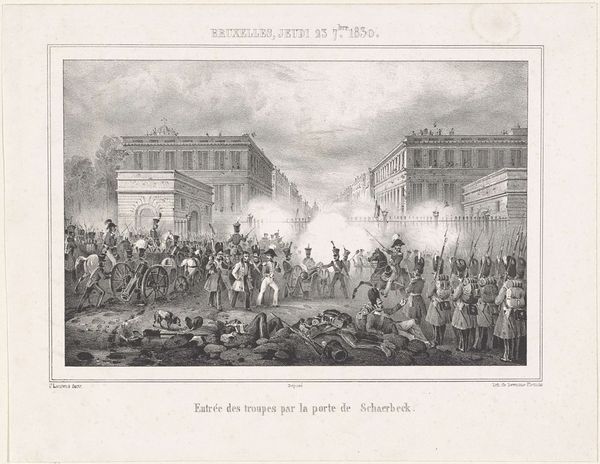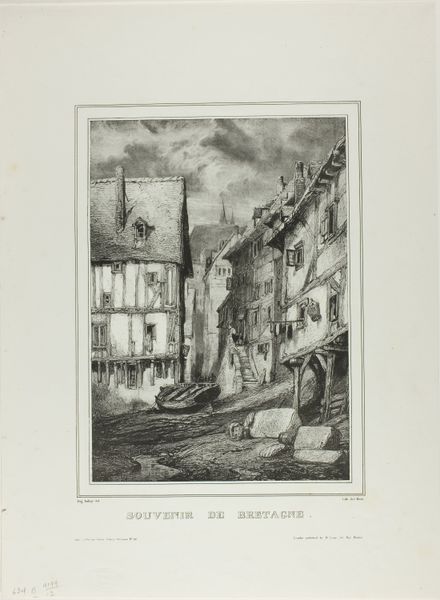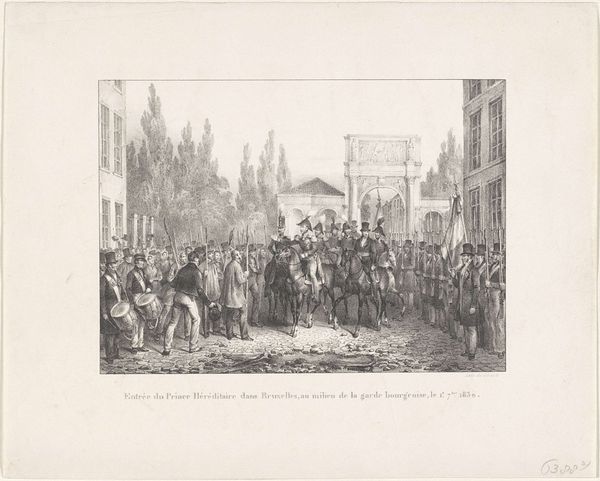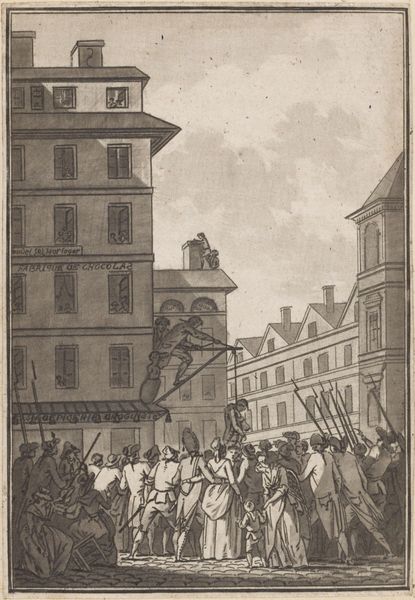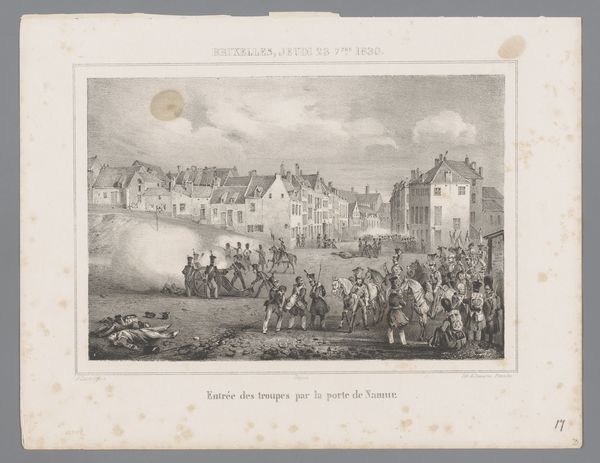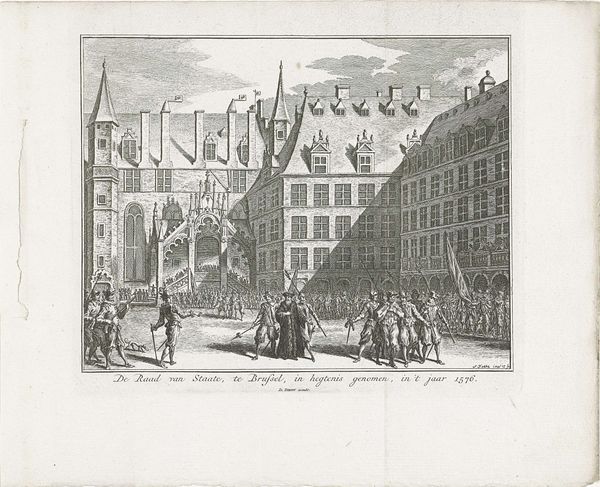
drawing, print, ink, engraving
#
drawing
# print
#
ink
#
romanticism
#
cityscape
#
history-painting
#
engraving
Dimensions: height 232 mm, width 305 mm
Copyright: Rijks Museum: Open Domain
Curator: Editor: This print, titled "Barricade in de Leuvenseweg te Brussel, 1830" by Jean-Louis Van Hemelryck, uses ink and engraving to capture a cityscape scene. It looks chaotic, with barricades and armed figures dominating the street. What do you see in this work that stands out to you? Curator: Well, first, the date is significant. 1830. It marks the Belgian Revolution, and this image encapsulates a very particular moment. This isn’t just a cityscape; it’s a depiction of uprising. I'm drawn to the tension between the organized lines of the soldiers and the messy, improvised barricade. What kind of statement do you think the artist might be trying to make? Editor: Perhaps the artist wants to highlight the divide between the establishment, represented by the soldiers, and the uprising of the people, who are defending themselves behind the barricade? The barricade appears more like a disorganized rebellion. Curator: Precisely. Think about who this print was made for. Prints were a way to disseminate information quickly and widely. This image would have contributed to a particular narrative about the revolution. Now consider: who gets to write history, and how are events like these remembered, or forgotten? Editor: That's fascinating. So, the print functions as both an artistic creation and a piece of propaganda, reflecting and shaping public opinion during the revolution. Curator: Exactly. Consider how Romanticism is often associated with nationalism. The artist uses dramatic composition and the gritty realism of the scene to evoke strong emotions, connecting the viewer to the struggle for independence. Does that change how you see the piece now? Editor: It definitely does. I now realize there are different voices in visual culture shaping the way historical events are interpreted, it isn't necessarily what actually occurred, but how the artist wants it remembered. Curator: Indeed, it opens a window into the power of art as a tool for shaping collective memory.
Comments
No comments
Be the first to comment and join the conversation on the ultimate creative platform.
